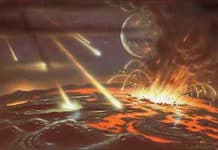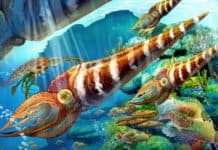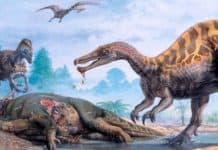We are going to talk about dinosaur eggs. While dino bones usually get all of the attention in the media, dino eggs are usually put on the sidelines. I don’t know why that is the case though. For me, this part of the dinosaurs were just as fascinating as their bones and can reveal just about as much information about them, too.
When They Were First Discovered?
When dinosaur bones were officially discovered in 1819, it was presumed that dinosaurs laid eggs because they were seen as reptile-like. However, this wouldn’t be confirmed until 1859. This is when Jean-Jacques Poech discovered some in France. Although, at first he thought he had found the eggs of giant birds and not dino eggs. It wouldn’t be until 1923 that the first scientifically discovered dinosaur eggs were discovered in Mongolia.
How Many Eggs Are Laid At A Time By A Dinosaur?
Paleontologists believe that when dinosaurs laid eggs, they laid around 20 of them at a time. This is what is known as a “clutch”. Laying this many eggs at a time made it more likely that some eggs would survive if they were attacked by predators.
What Percentage Of Them Hatched?
Unfortunately, not a whole lot of the eggs would have survived long enough to hatch. Most of them would have been devoured by carnivorous dinosaurs. It is estimated that probably only about 10-20 percent of them would hatch. Which is why so many eggs would have to be laid in the first place.
Why Did They Lay Eggs?
Many people wonder why dinosaurs would lay eggs instead of having live births. After all, it seems that as soon as the mother left the nest, other animals could eat the eggs. The answer to this question is quite simple. Having the baby dinos develop in an egg is less taxing on the mother’s body. This then allows the mothers to conserve their resources in environments where resources may be scarce. They can then overcome the fact that the eggs are consumed by predators by producing a sufficient number to ensure that at least some of them hatch.
Are Dino Eggs Rare?
You would think that there would be a lot of dinosaur eggs floating around. After all, there were billions of dinosaurs roaming the Earth. And all of these dinosaurs must have laid trillions of eggs. So where are they? Well, the truth of the matter is that most of them didn’t make it.
Most of them were devoured shortly after they were laid. Others were degraded by bacteria that invaded the shell of the egg and consumed the embryo. This is why it is extremely rare to find these eggs and also why scientists get so excited when they do! Every time a clutch is found it is very news worthy.

























